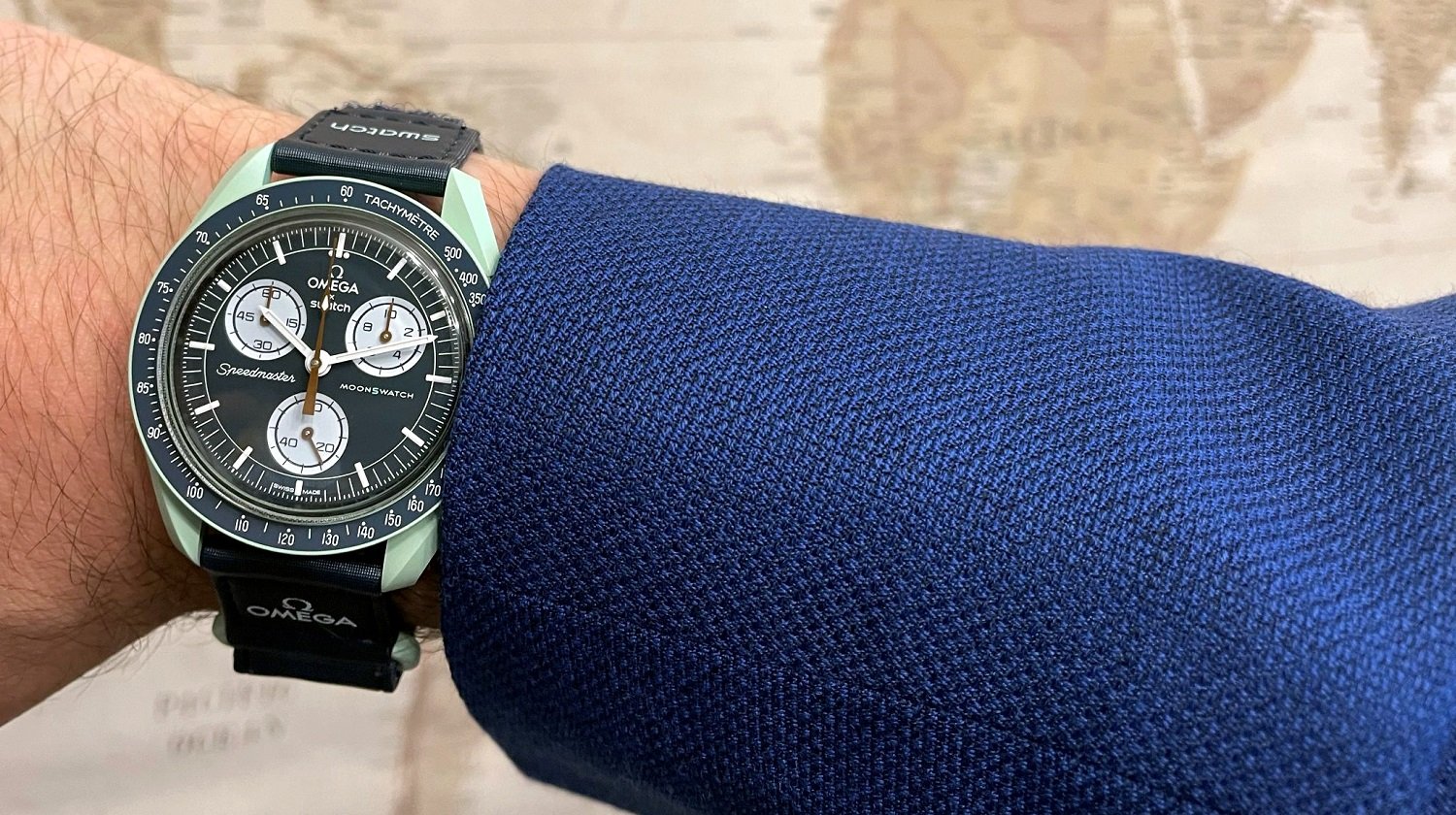Back Down to Earth
The MoonSwatch release was a mistake for Omega.
Now that we are far enough removed from the release, it’s clear this whimsical project delivered a big win for Swatch (the brand not the conglomerate) and undeniable L for Omega. Before the MoonSwatch, online watch conversations were centered around “Omega vs Rolex”, now the Youtube clickbait is “Omega vs Tudor” and that says it all.
Source: Italianwatchspotter.com
Yes, the MoonSwatch DOES make your real Speedy less valuable. I’m sorry. Saying otherwise would suggest a Volkswagen 911 would increase the value of your Porsche. Producing a cheap replica in the image of a luxury item may be great for Swatch but does nothing good for Omega. In an industry full of imitators and fakes, why give people another reason to look a little closer at your watch and ask “is that the real one?”
Clearly, Omega (and more so the Swatch Group) see a commercial opportunity in appealing to a bigger audience but they’ve broken their own model in the process and invited in two of the biggest headaches in today’s watch world: horrible retail experiences and hypebeast flippers.
One of the best things Omega had going for them is you can actually buy their watches compared to a Rolex. That is not true of the MoonSwatch. Yes, there is more being released but they will be quickly snatched up and put online for gross multiples. This instantaneous sell out model is a broken one and it is everywhere. I also think Swatch is moving in the wrong direction by rejecting the online sales trends (a topic for another article).
Hypebeast culture has made its way through all of the fashion world. Sneaker culture set the precedent and created massive secondary markets, putting companies like StockX valued at over $3.5 Billion. Anyone who has ever tried to buy Jordan’s on one of those sites will tell you the consumer is the loser and so are the brands in the long run. Rolex (and Patek and AP) face a massive battle against re-sellers that feed on hype culture allowing them to realize 2x-4x returns. AP has smartly begun taking back control of their distribution and working to ensure the client (not customer) is not in fact another business looking to further rob the end wearer. So, why in the world would Omega invite in more scalpers? Does seeing their watches do better on the secondary market really help their brand?
Of course it does not, but there is something more important at play here: money. Thinking back on the fashion world, we see this type of “high-low” collaboration all the time now: think Fortnite X Balenciaga. This may create a temporary boost in sales and brand awareness but I’d argue it did not strengthen Balenciaga as a respected fashion house and luxury brand. We also see that as brands are increasingly consolidated into mega-corporations it becomes increasingly difficult to maintain a single brand identity. This is the advantage that Rolex and Patek will always have. The big corporations seek to maximize their total profit, sometimes at the expense of individual brands in their portfolio.
Source: dappered.com
This release highlights a longer standing crisis, what is Omega’s brand? Is it luxury? Should we be comparing it to Rolex (Hint: no), Tudor (Hint: maybe), or Grand Seiko (Hint: increasingly wishful thinking)? I like the idea of appealing to a younger audience but this was hardly the way to do it, and frankly appealing to new watch lovers is a problem they don’t have. Omega has long been a great starter watch for the young collector. In their defense, there is not much to do when the big boss puts this idea on your desk. I like to think the internal Omega executives agree with me.
The MoonSwatch legacy is horribly long lines, reseller madness, and cheap plastic (that will leave your wrist looking like Papa Smurf). It did not conjure a desire to obtain the “real thing” someday. Omega makes great watches. The Speedmaster is an icon. They need a new marketing department.

